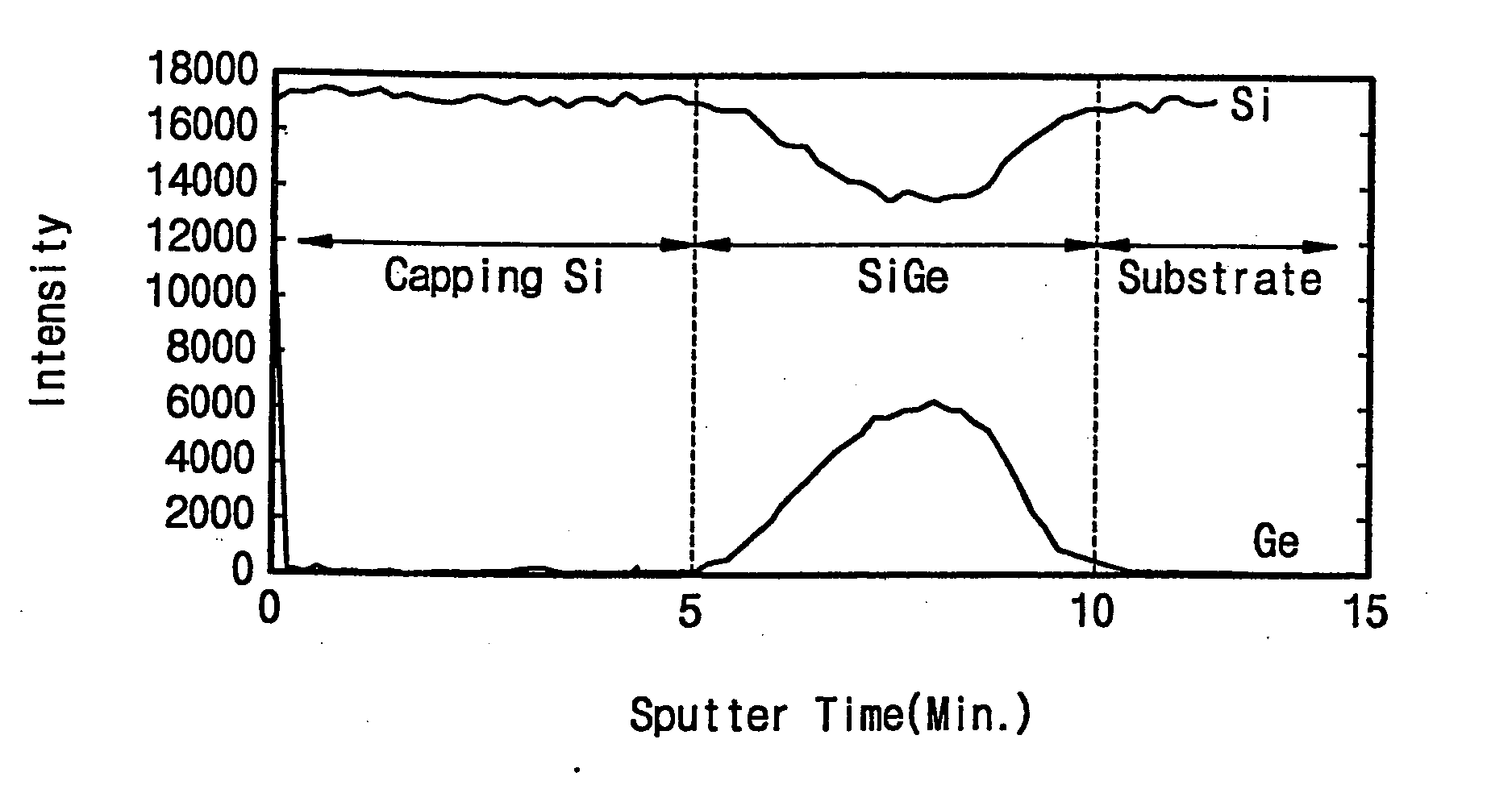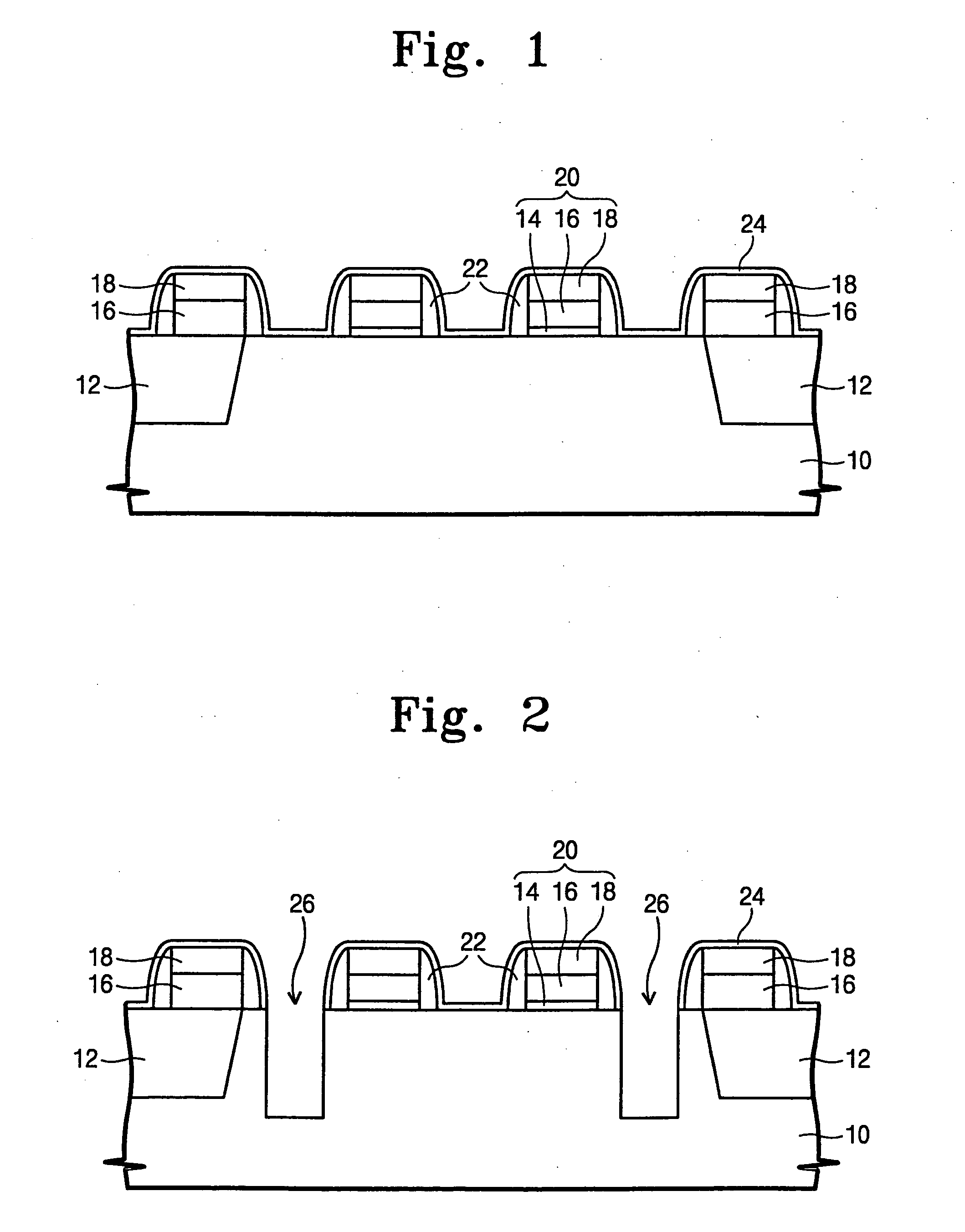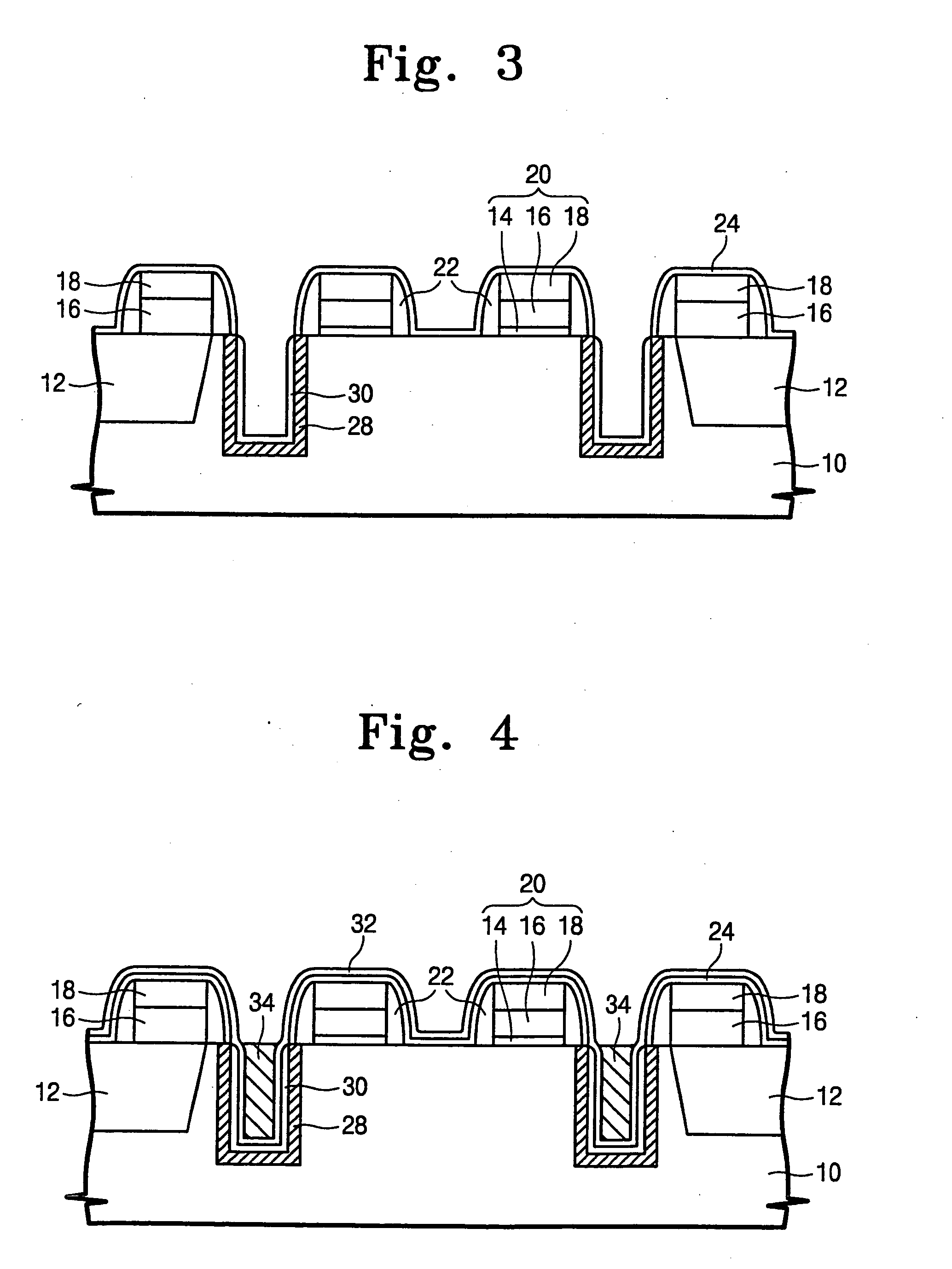Semiconductor memory device having capacitor and method of forming the same
a memory device and capacitor technology, applied in the direction of capacitors, solid-state devices, transistors, etc., can solve the problems of difficult control of hsg formation, reduced substrate area available for capacitor formation, and reduced surface area of polycrystalline silicon, so as to increase the electrode surface area and increase the capacitance
- Summary
- Abstract
- Description
- Claims
- Application Information
AI Technical Summary
Benefits of technology
Problems solved by technology
Method used
Image
Examples
embodiment 1
Preferred Embodiment 1
[0023] Referring to FIG. 1, a device isolation layer 12 is formed at a substrate 10. The device isolation layer 12 is formed by selectively etching the substrate 10 to form a trench. An insulation layer fills the trench. The insulation layer is formed by CVD. A gate insulation layer 14 is formed through thermal oxidation at an active region where the device isolation layer 12 is absent. A gate layer 16 and an insulation layer 18 for capping are stacked at the substrate where the gate insulation layer 14 is formed. The layers are patterned to form a gate electrode 20. Insulation spacers 22 are formed at the sidewall of the gate electrode 20. A silicon nitride layer is conformally formed as a protective layer 24 over the entire surface of the substrate.
[0024] Referring to FIG. 2, a photoresist pattern (not shown) is formed and used to remove the protective layer 24 at a desired region between the gate electrodes 20 and to expose the crystalline silicon substrate...
embodiment 2
Preferred Embodiment 2
[0032]FIG. 7 is a process cross-sectional view for illustrating a capacitor bottom electrode of a semiconductor memory device in accordance with a second preferred embodiment of the present invention.
[0033] Referring to FIG. 7, the gate electrode 20, the insulation spacer 22 and the protective layer 24 are formed at the substrate 10 and the substrate 10 is exposed at a source region. Crystalline is then selectively grown where the substrate 10 is exposed. The result is the formation of a stack-type bottom electrode 36 capacitor. The surface layer 38 can be formed from a silicon germanium crystalline layer or a dual layer in which silicon crystalline is stacked on silicon germanium crystalline. A method of forming the surface layer 38 includes the following: stacking crystalline for a predefined time not to exceed 20 minutes at a pressure of approximately 20 Torr and a temperature of approximately 780° C. in a conventional LPCVD device using silane, dichlorosil...
PUM
| Property | Measurement | Unit |
|---|---|---|
| temperatures | aaaaa | aaaaa |
| pressures | aaaaa | aaaaa |
| temperature | aaaaa | aaaaa |
Abstract
Description
Claims
Application Information
 Login to View More
Login to View More - R&D
- Intellectual Property
- Life Sciences
- Materials
- Tech Scout
- Unparalleled Data Quality
- Higher Quality Content
- 60% Fewer Hallucinations
Browse by: Latest US Patents, China's latest patents, Technical Efficacy Thesaurus, Application Domain, Technology Topic, Popular Technical Reports.
© 2025 PatSnap. All rights reserved.Legal|Privacy policy|Modern Slavery Act Transparency Statement|Sitemap|About US| Contact US: help@patsnap.com



